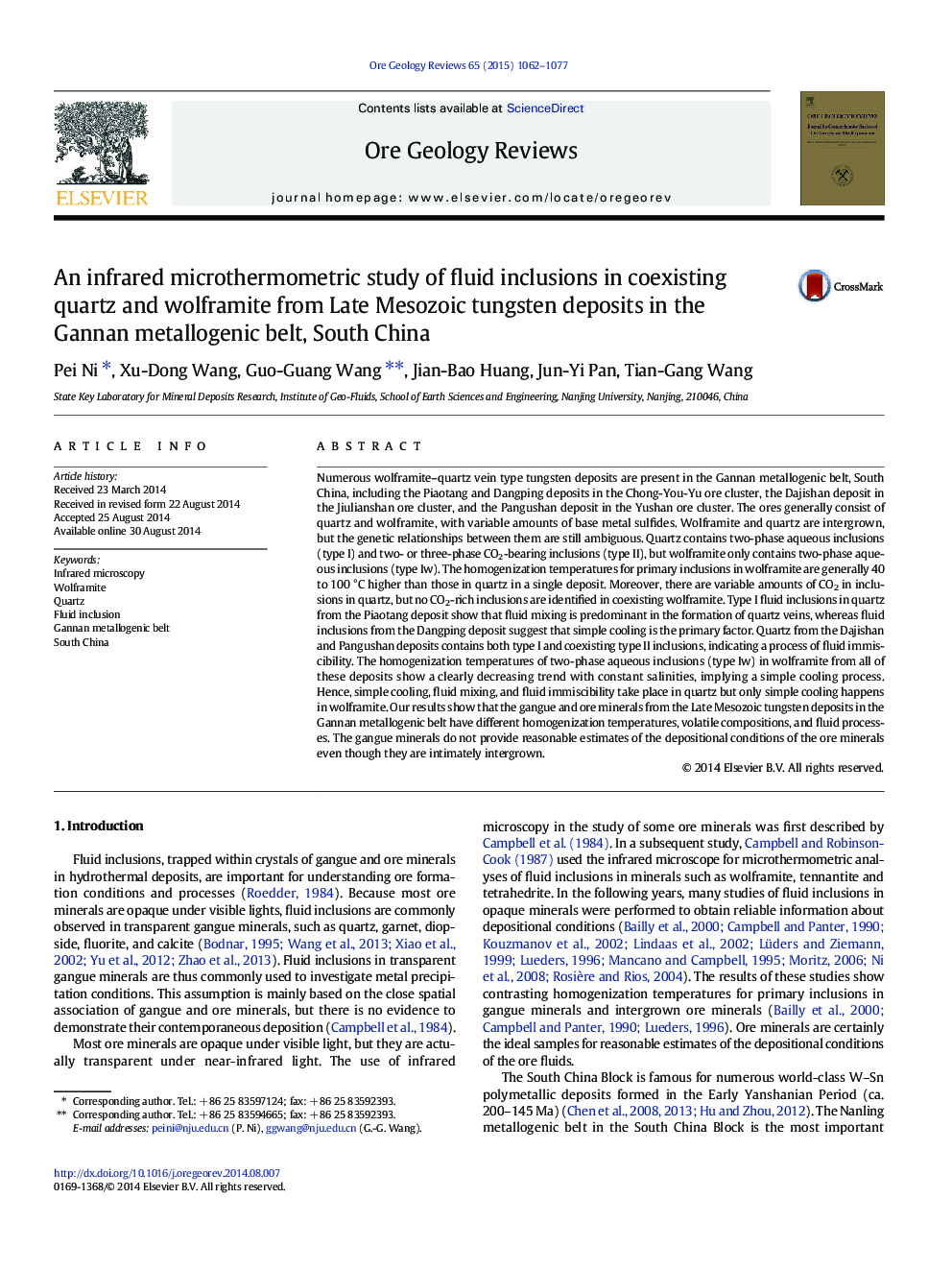| Article ID | Journal | Published Year | Pages | File Type |
|---|---|---|---|---|
| 4697161 | Ore Geology Reviews | 2015 | 16 Pages |
•Fluid inclusion studies were performed on wolframite and coexisting quartz.•In the same deposit, wolframite shows higher temperatures than intergrown quartz.•CO2-bearing inclusions can be present in quartz, but not in coexisting wolframite.•Wolframite and coexisting quartz show different fluid processes.•Gangue minerals cannot rightly estimate the depositional conditions of ore minerals.
Numerous wolframite–quartz vein type tungsten deposits are present in the Gannan metallogenic belt, South China, including the Piaotang and Dangping deposits in the Chong-You-Yu ore cluster, the Dajishan deposit in the Jiulianshan ore cluster, and the Pangushan deposit in the Yushan ore cluster. The ores generally consist of quartz and wolframite, with variable amounts of base metal sulfides. Wolframite and quartz are intergrown, but the genetic relationships between them are still ambiguous. Quartz contains two-phase aqueous inclusions (type I) and two- or three-phase CO2-bearing inclusions (type II), but wolframite only contains two-phase aqueous inclusions (type Iw). The homogenization temperatures for primary inclusions in wolframite are generally 40 to 100 °C higher than those in quartz in a single deposit. Moreover, there are variable amounts of CO2 in inclusions in quartz, but no CO2-rich inclusions are identified in coexisting wolframite. Type I fluid inclusions in quartz from the Piaotang deposit show that fluid mixing is predominant in the formation of quartz veins, whereas fluid inclusions from the Dangping deposit suggest that simple cooling is the primary factor. Quartz from the Dajishan and Pangushan deposits contains both type I and coexisting type II inclusions, indicating a process of fluid immiscibility. The homogenization temperatures of two-phase aqueous inclusions (type Iw) in wolframite from all of these deposits show a clearly decreasing trend with constant salinities, implying a simple cooling process. Hence, simple cooling, fluid mixing, and fluid immiscibility take place in quartz but only simple cooling happens in wolframite. Our results show that the gangue and ore minerals from the Late Mesozoic tungsten deposits in the Gannan metallogenic belt have different homogenization temperatures, volatile compositions, and fluid processes. The gangue minerals do not provide reasonable estimates of the depositional conditions of the ore minerals even though they are intimately intergrown.
